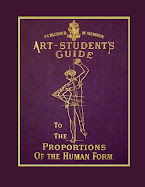
Published in a book by the engraver J. Hagger of London there is this description of a competition between the Greek sculptors Polycletus, Phidias, Cresilas, and Phradmon.
According to an unanthenticated legend, it is supposed that the sculptors Polycletus, Phidias, Cresilas, and Phradmon competed in the production of an Amazon. Pliny says: ''It was agreed upon, to cause the most perfect of the competing statues to be selected by the decision of the masters themselves; in order that it might be set up in the Temple of the Ephesian Artemis. Following a very wholesome principle, that statue was selected, which each artist had declared to be the best, after his own; and this was the statue executed by Polycletus. That by Phidias was declared to be the second best, that of the Cydonian Cresilas third, and that of Phradmon fourth in order of merit. The antiquarians may be left to decide how much of this legend is true; but such tales are never quite destitute of foundation, and as a matter of fact a number of such Amazon statues have come down to us, which have so identical an expression of melancholy, and so much similarity of position as to render the idea of some such competition highly probable. The Amazon in the Braccio Nuovo of the Museo Chiaramonte in the Vatican, is generally ascribed to Phidias. The right arm, which is so effective towards the entire expression of the Statue, has been restored, and was for a long time considered to have been badly done, just as the arm of the Laocoon by Montorsoli, until lately a gem has been brought to light which treats the same subject as the statue, and also represents the Amazon with her right arm bent over her head. She is holding a spear upon which she is leaning either to rest herself, or to use it as a leaping pole. The Amazon from the Villa Mattel is a statue of noble proportions; the nude portion and the drapery are here equally important and well executed. The torso is elegant and yet unconstrained and simply draped; the treatment of the folds is masterful. Altogether the history of these Amazon-statues is very obscure; even the intention of the artists can only be guessed at; hence of course, it is almost impossible for us to decide, whether the one or the other is the most successful, or the most artistically valuable.


This is a sculpture after Polycletus' Amazon. And a drawing of the the sculpture after Polycletus.
From the 1911 Encyclopedia Britannica: "Polycletus was of the school of Argos, a contemporary of Pheidias and in the opinion of the Greeks his equal. He made a figure of an Amazon for Ephesus which was regarded as superior to the Amazon of Pheidias made at the same time; and his colossal Hera of gold and ivory which stood in the temple near Argos was considered as worthy to rank with the Zeus of Pheidias."
Link to the Amazon myth.
Amazon Sculpture on Ebay
Link to a web page about Polycletus' Doryphoros, his famous canon on human proportions, which became the basis for Johann Gottfried Schadow's Atlas Zu Polyclet Oder Von Den Maassen Des Menschen Nach Dem Geschlechte Und Alter or
The Sculptor and Art Student's Guide to the Proportions of the Human Form.

Diadumenos after Polycletus in the Skulpturhalle Basel. Notice the weight on the right foot giving the figure Polycletus' characteristic S-curve or the natural shift of weight to one leg known as contrapposto.


Two copies of Polycletus' (Polyclitus) Doryphorus and a link to an article about Polycletus' Canon of Proportion.
Some more notes on the Doryphorus.
And an essay about the biological basis for experiencing beauty in art by Deric Bownds, using the Doryphorus as an example.
A page about the Doryphorus: The Doryphoros or Canon, 450-440 BC, Polykleitos (or Polycletus) of Sikyon, 212 cm marble copy from Pompeii (original bronze), now at the Museo Archaeologico, Naples in Italy.
Tribhanga: Strike A Pose a web site comparing eastern sculpture on the Adinatha temple to the Doryphorus.
Canons of Proportion and the Ideal, Part 1 from isculpt.org.
Here is a post titled "Is beauty in the brain of the beholder?" which talks about a study by Professor Giacomo Rizzolatti of the University of Parma, and his colleagues, who look at the perceptions of beauty using brain imaging. They manipulated images of classical sculptures to increase or shorten the length of the legs or torso and found out that the sculptures constructed to the proportions of the golden ratio did produce higher levels of activation in specific areas of the brain including the insula, the region associated with emotion.

Doryphoros by Polykleitos showing the canonical version in the center and the two manipulated versions.
Link to the actual paper: "The Golden Beauty: Brain Response to Classical and Renaissance Sculptures", by Cinzia Di Dio1, Emiliano Macaluso, Giacomo Rizzolatti1.

 Slide show of some of the images used in the study.
Slide show of some of the images used in the study.
Drawing the Draped Figure

The Art Student's Guide to the Proportions of the Human Form
Or download a copy at Figure-Drawings.com.
Link to the Plaster Cast Gallery at the Lindenau Museum for examples of plaster casts used by art students: Die Gipsabguss-Galerie - Das erste Aktmodell. Another link.



















No comments:
Post a Comment